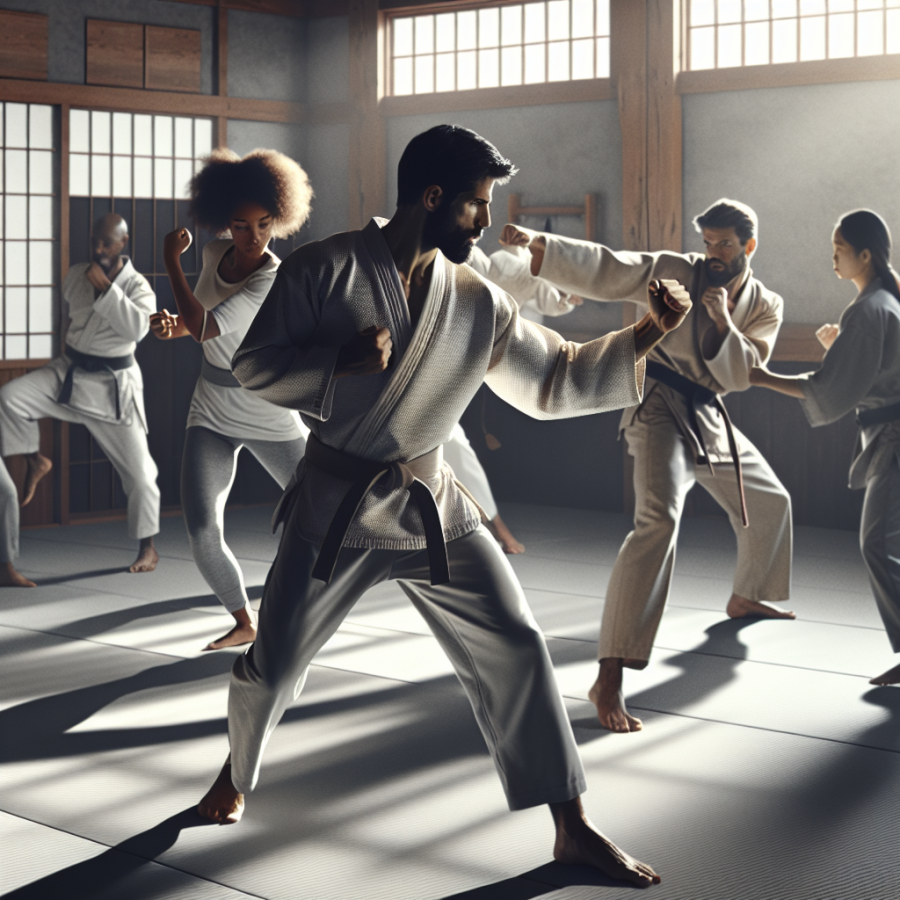Implementing Tactical Prowess and Mental Fortitude in the Cage
Implementing tactical prowess in the cage involves a deep understanding and application of strategic combat principles. Elite mixed martial artists become masters of the octagon by honing their ability to adapt to any fighting style and opponent. They utilize a blend of striking, grappling, and conditioning to exploit their opponent’s weaknesses while constantly enhancing their own strengths.
The first step in showcasing tactical prowess is meticulous fight preparation. Fighters and their coaching teams spend countless hours studying footage of their opponents, identifying habitual patterns, and potential vulnerabilities. This reconnaissance allows fighters to tailor their training camps specifically, focusing on techniques and combinations most likely to succeed against the forthcoming challenge.
In addition to preparation, real-time strategy adaptation is crucial. Elite fighters maintain a high level of fight IQ, which enables them to adjust their game plans dynamically during a match. They read their opponents' movements, predict offensive and defensive tactics, and seamlessly transition between fighting styles. For instance, they may switch from Muay Thai striking to Brazilian Jiu-Jitsu submission attempts as the fight dictates.
Moreover, feints and misdirection play a pivotal role in the octagon. By employing feints, fighters can create openings in their opponent's defense, setting up powerful strikes or takedown opportunities. Misdirection also involves using one's eyes, head movement, or even certain stances to fool the opponent about the next move, thereby gaining a competitive edge.
Meanwhile, mental fortitude is equally as important as physical skill in the brutal arena of MMA. A fighter's psychological resilience can be the deciding factor in a closely matched bout. Elite athletes engage in mental conditioning to build the focus, confidence, and toughness required to excel under pressure.
Practicing visualization techniques is a common psychological tool. Fighters envision themselves executing perfect techniques and overcoming challenging scenarios. This mental rehearsal primes them for success and can enhance actual performance in the cage.
Coping with adversity is another aspect of mental fortitude vital for MMA fighters. They must be prepared to face pain, fatigue, and unexpected setbacks without losing their composure or deviating from the strategy. Resilient fighters harness these moments to fuel their determination, often staging impressive comebacks or persisting when others might capitulate.
Establishing a strong support system contributes significantly to a fighter’s mental strength. Coaches, teammates, family, and mental coaches all play a role in building an athlete's confidence and helping them deal with the psychological stresses of competition.
Read also:
Unleashing the Fighter Within: Insights from the MMA Lab
Analyzing the Training Regimens of Top Octagon Contenders
In seeking to understand the formula behind the success of elite mixed martial artists, it’s imperative to delve into their training regimens, which are as complex and varied as the sport itself. The top fighters in the octagon follow routines that are carefully crafted to deliver peak performance at competition time.
These athletes engage in a fine balance of aerobic and anaerobic exercises. This balanced approach is key to developing both the explosiveness needed for powerful strikes and takedowns, and the endurance necessary for persisting through grueling rounds against equally skilled opponents. Cardiovascular training, including protocols such as high-intensity interval training (HIIT), is routinely employed to maximize the efficiency of the heart and lungs, ensuring that fighters can maintain a high work rate throughout the fight.
Strength and conditioning are equally as important. Utilizing various methods, from Olympic weightlifting to kettlebell workouts, athletes aim to build functional muscle that can provide the power for strikes and resist the efforts of their opponents on the ground. Core strength is particularly emphasized, as it is vital for maintaining balance and stability during a bout.
Furthermore, flexibility and agility training also play crucial roles in a fighter's regimen. The dynamic nature of MMA demands the ability to move quickly and fluidly, avoid strikes, and enact offensive maneuvers. Many fighters incorporate yoga and dynamic stretching into their routines to improve range of motion and prevent injuries.
Technical skills are honed with countless hours dedicated to each discipline that comprises mixed martial arts — striking, wrestling, Brazilian Jiu-Jitsu, judo, and more. Sparring sessions allow fighters to simulate real combat situations, adjusting their strategies to different fighting styles they may encounter in the octagon.
Mental preparation is, in some ways, just as rigorous as the physical. Elite fighters often work with sports psychologists to enhance mental toughness, concentration, and the ability to stay calm under pressure. Visualization techniques, meditation, and breathing exercises are employed to focus the mind and prepare mentally for the fight's stresses and demands.
Nutrition and recovery are the final, critical components of a contender's training regimen. Months before the fight, dietary plans are carefully structured to meet the fighter's energy needs, optimize body composition, and ensure proper weight class placement. Post-training recovery measures such as massage, cryotherapy, and sufficient sleep are essential to allow for the body’s repair and to prevent overuse injuries.
Training and Preparation: Elite MMA Fighters
At the core of mastering the octagon, a fighter’s rigorous training and preparation regimen sets the foundation for their success. World-class MMA fighters follow a disciplined routine that incorporates various aspects of martial arts, including Brazilian Jiu-Jitsu, Muay Thai, wrestling, and boxing, to ensure they are well-rounded competitors. Apart from technical skills, their training focuses heavily on physical conditioning—improving cardiovascular endurance, strength, and flexibility to handle the extreme demands of a fight. Nutrition and recovery are also crucial elements, with fighters adhering to strict diets and utilizing physiotherapy, massages, and adequate rest to keep their bodies in peak fighting condition.
Striking Techniques and Stand-up Game
In the octagon, an elite fighter must have precise and powerful striking skills. They spend countless hours perfecting their punches, kicks, elbows, and knees to find openings in their opponent's defenses. Footwork and head movement are essential components of the stand-up game, allowing fighters to maintain the proper distance and angle for delivering effective strikes while avoiding counterattacks. Timing is critical, and the best MMA fighters can read their opponents' patterns, predicting their movements and capitalizing on split-second opportunities to land significant blows.
Grappling and Ground Control
Ground fighting is a pivotal aspect of MMA, and mastering grappling techniques can often be the difference between victory and defeat. Fighters train in various submission holds and escapes, ensuring they are as comfortable on the ground as they are standing up. Controlling an opponent on the mat, maintaining dominant positions, and executing submissions are all practiced relentlessly. Takedown defense is equally important, as preventing an opponent from dictating the pace and position of the fight can keep a fighter in a favorable position to leverage their strengths, no matter where the fight goes.
Mental Toughness and Fight IQ
One of the most underrated yet vital aspects of mastering the octagon is mental preparedness. The best fighters develop an unshakeable mindset, allowing them to remain composed under pressure and adversity. This mental toughness is cultivated through simulated high-pressure training situations and a strong support system. Moreover, having a high fight IQ allows fighters to adjust strategies on the fly, making critical decisions during the heat of battle. They study their opponents meticulously, understanding their tendencies, and developing game plans that maximize their own advantages while exploiting the weaknesses of others.
Risk Management and Adaptability
Elite MMA fighters must be adept at managing risks during a fight.




